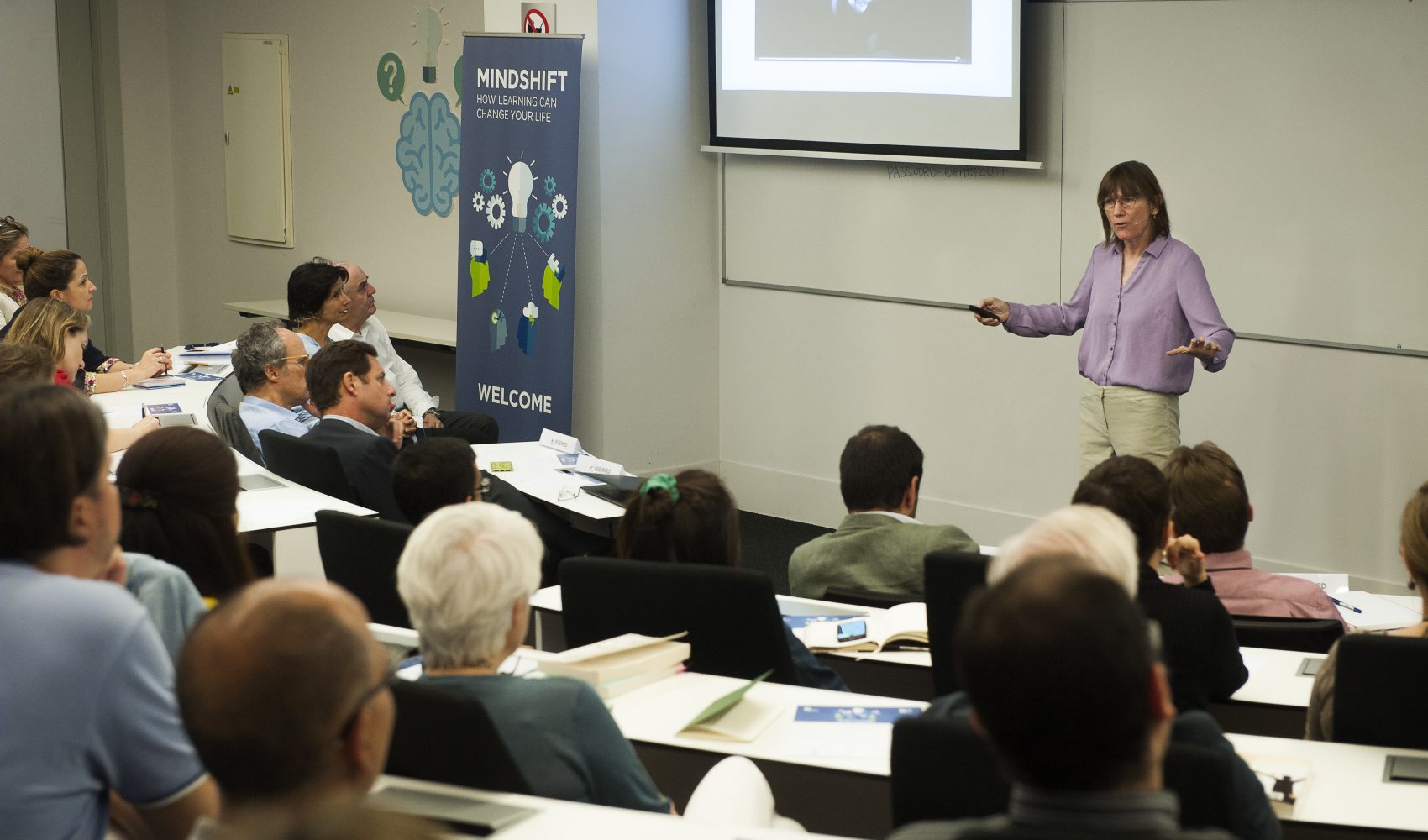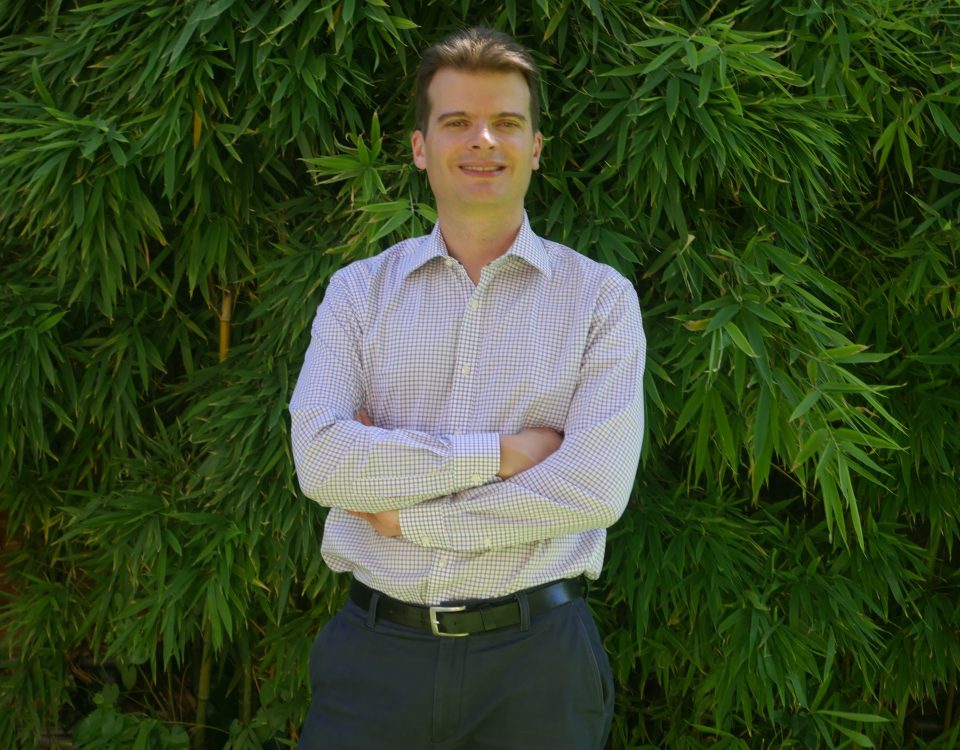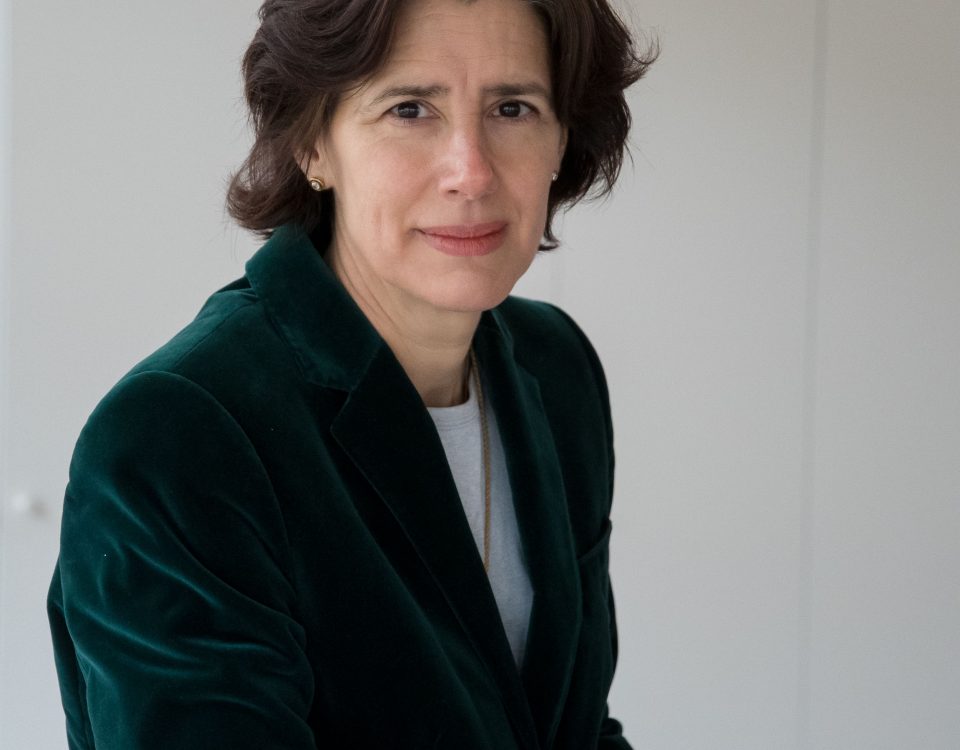Learning how to learn with Barbara Oakley

Our pursuit of lifelong learning at IE Exponential Learning led us to Barbara Oakley. It’s no wonder that her TEDTalk “Learning How to Learn” features so prominently as the first of our Favorite Learning Resources. To give us a sneak preview of her third book, Learning How to Learn that’s coming out in 2018, the author of Mindshiftand A Mind for Numbers came to Madrid for two days of events on IE’s campus.
But, how did we at IEXL arrive at that conclusion and decide to work to foster this philosophy of lifelong learning throughout all our program offerings? It all started with IE Exponential Learning Executive President Teresa Martín-Retortillo taking the world’s most-taken massive open online course, better known as a MOOC.
What MOOC is that you ask? It’s Barbara Oakley’s, Learning How to Learn. This MOOC not only is the world’s most popular MOOC but it also“…continues to help learners around the globe improve their ability and confidence when approaching challenging subjects.”
After taking the MOOC, something clicked as we worked to create the IE Exponential Learning family: the learning mindset as your life-changer. As Martín-Retortillo explained in her introduction to the first of Oakley’s three talks on campus, the learning mindset is pivotal as our professional lives extend, and the impetus is now a paradigm shift from “know-it-all” to “learn-it-all.” That is why a learning mindset is one of IE Exponential Learning’s central pillars because not only can a learning mindset help you change your life, but we believe in learning’s potential as a critical competitive advantage in today’s dynamic environment.
Is changing to a learning mindset possible?
Yes, it is. We can see it in one of the world’s major technology companies, Microsoft. When Satya Nadella took over the company as CEO in 2014, one of the most significant changes Nadella made had to with implementing the idea of the “growth mindset.” What exactly is this? It’s “the notion that you should take nothing for granted and always be willing to check your assumptions as new data comes in.” But, what else is part of this mindset that’s so pivotal for a company like Microsoft? It is because the growth mindset “emphasizes the notion of learning from others, and learning from your own mistakes, so you can move quickly and find the right path forward.”
This is why Martín-Retortillo referenced Satya Nadella’s efforts as a manifestation of this new way of thinking. When Nadella took the helm at Microsoft, it was a company with a “know-it-all” mindset deeply embedded into its culture. By adopting this cultural change that places great emphasis on having to create an environment with a learn it all mentality. It means that the company will need people to acknowledge that they don’t know and how they’ll collaborate to learn what they need to make those decisions.
Hear from Satya Nadella in his discussion with Rebecca Blumenstein in Time Talks with The New York Times:
What makes the best teachers so great?
The answer might surprise you: metaphors. When the best professors out there cite metaphors as one of the resources that make such a difference, they often hesitate to mention it for their fear of people saying that they are dumbing down the material for the learner. Contrary to that belief, it has the opposite effect. Metaphor helps us understand one idea and that neuro-pattern is the same area you use to follow the other pattern.
Metaphors aside, what’s the key to learning how to learn?
Business Insider summarizes the seven most popular tips that Oakley espouses well in this article, but one of the most insightful was the idea of thinking about the state of your brain having two primary states: focused and diffused. When someone learns, the brain is merely shifting between the two modes. When in focus mode, you have patterns laid based on what you’re learning to access them when you focus. In contrast, when in diffuse mode, your mind can run more freely. You, at least, can get into a new place you might need to be in to look at the problem in the perspective you need to solve it.
Likewise, with your memory, there are two modes: your working memory, which is whatever you temporarily happen to be holding in your mind at a given moment, while your long-term memory is everything else stored permanently. When one retrieves information, attention is like an octopus, but only four of the legs can reach down into your long-term memory at a time and bring things up into your working memory.
There are also plenty of techniques to train your brain, but if you get enough sleep, you will see better results from your learning because the architecture of learning inside your brain grows while you’re sleeping. The article from Business Insider we linked above highlights Oakley’s favorites, but you can also improve your learning as an adult by playing video games because it improves your focus, your ability to hold things into your working memory, and surprising enough, they improve your eyesight.
It’s our ability to learn and be flexible
The Spanish scientist and physician Ramón y Cajal once said: “Any man could, if he were so inclined, be the sculptor of his own brain.” That is because Ramón y Cajal saw the neurons inside the human brain as a garden. Thus, if we continue to learn and flexibility, we will have the skills to confront the next set of challenges in our professional lives.
Ready to change your life with the learning mindset?
Hear from Barbara Oakley herself in one of her recorded talks at IE:
Feel inspired?
After hearing from Oakley in her talk, get started on your learning journey with IE Exponential Learning in any of our programs (which you can find here, here, here, here, and here) and join the next edition of the Learning How to Learn MOOC.


